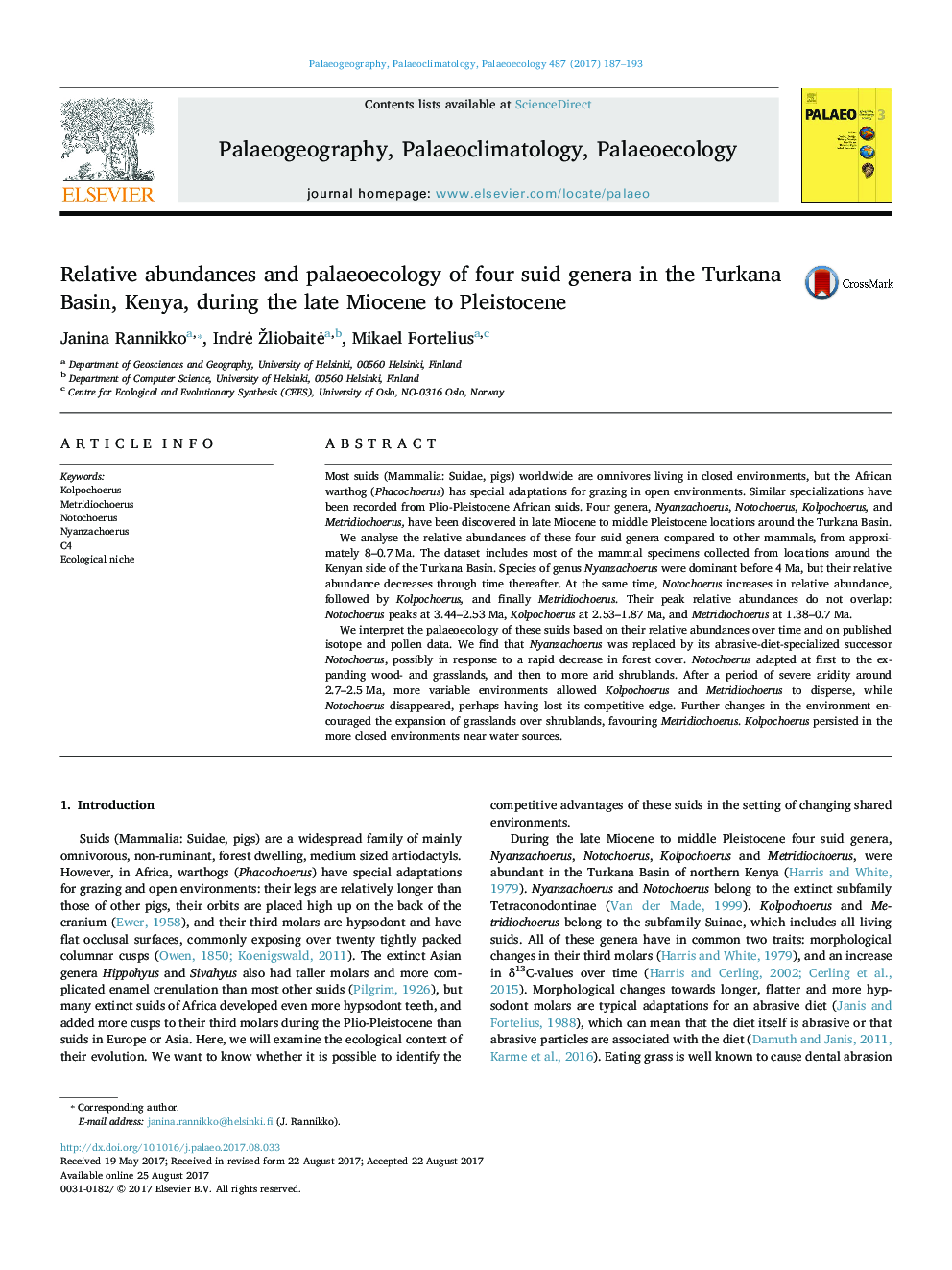| Article ID | Journal | Published Year | Pages | File Type |
|---|---|---|---|---|
| 8868565 | Palaeogeography, Palaeoclimatology, Palaeoecology | 2017 | 7 Pages |
Abstract
We interpret the palaeoecology of these suids based on their relative abundances over time and on published isotope and pollen data. We find that Nyanzachoerus was replaced by its abrasive-diet-specialized successor Notochoerus, possibly in response to a rapid decrease in forest cover. Notochoerus adapted at first to the expanding wood- and grasslands, and then to more arid shrublands. After a period of severe aridity around 2.7-2.5Â Ma, more variable environments allowed Kolpochoerus and Metridiochoerus to disperse, while Notochoerus disappeared, perhaps having lost its competitive edge. Further changes in the environment encouraged the expansion of grasslands over shrublands, favouring Metridiochoerus. Kolpochoerus persisted in the more closed environments near water sources.
Keywords
Related Topics
Physical Sciences and Engineering
Earth and Planetary Sciences
Earth-Surface Processes
Authors
Janina Rannikko, IndrÄ Å½liobaitÄ, Mikael Fortelius,
